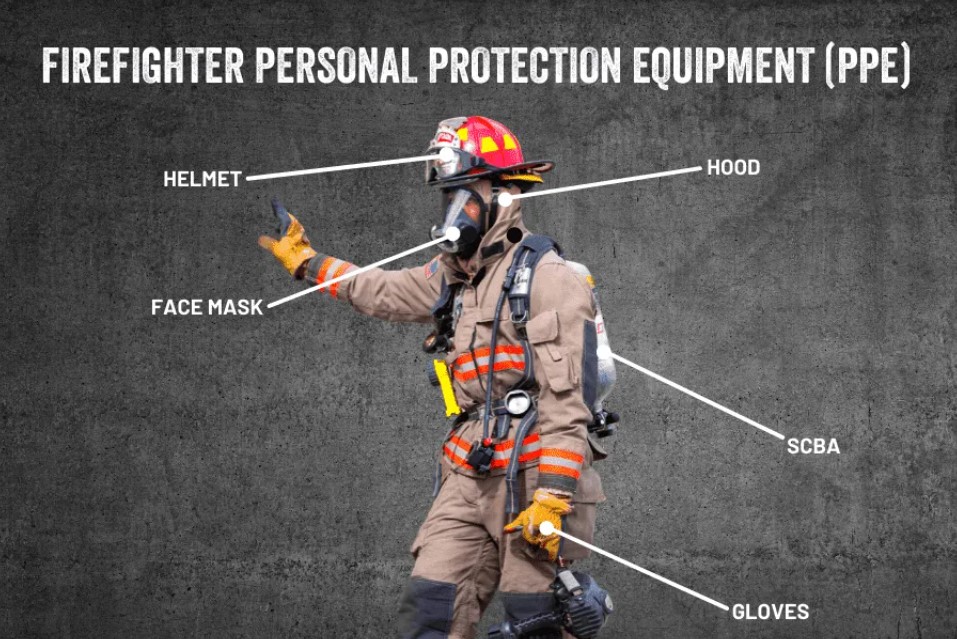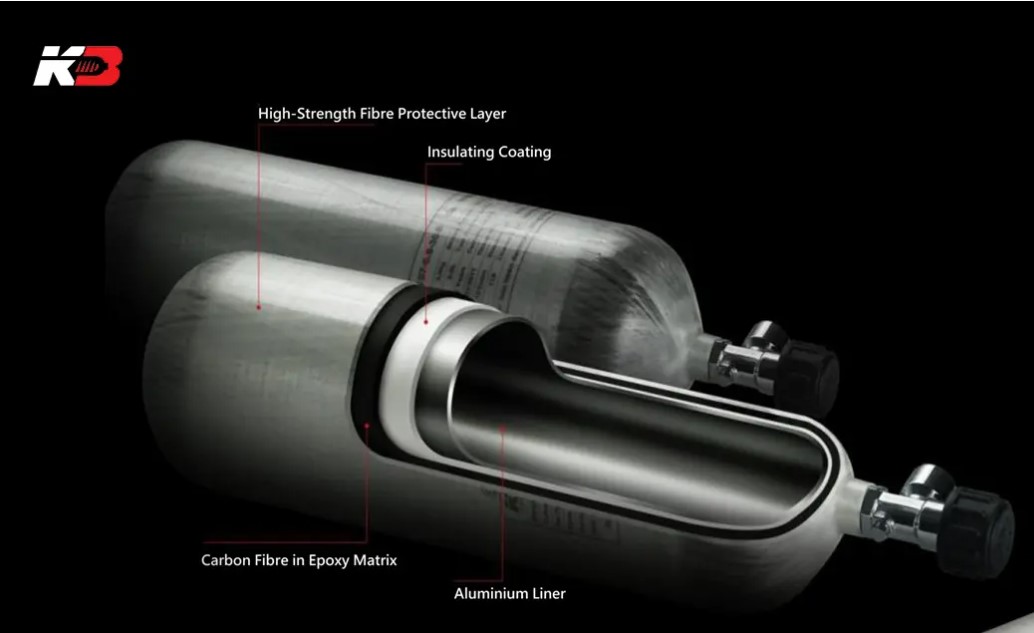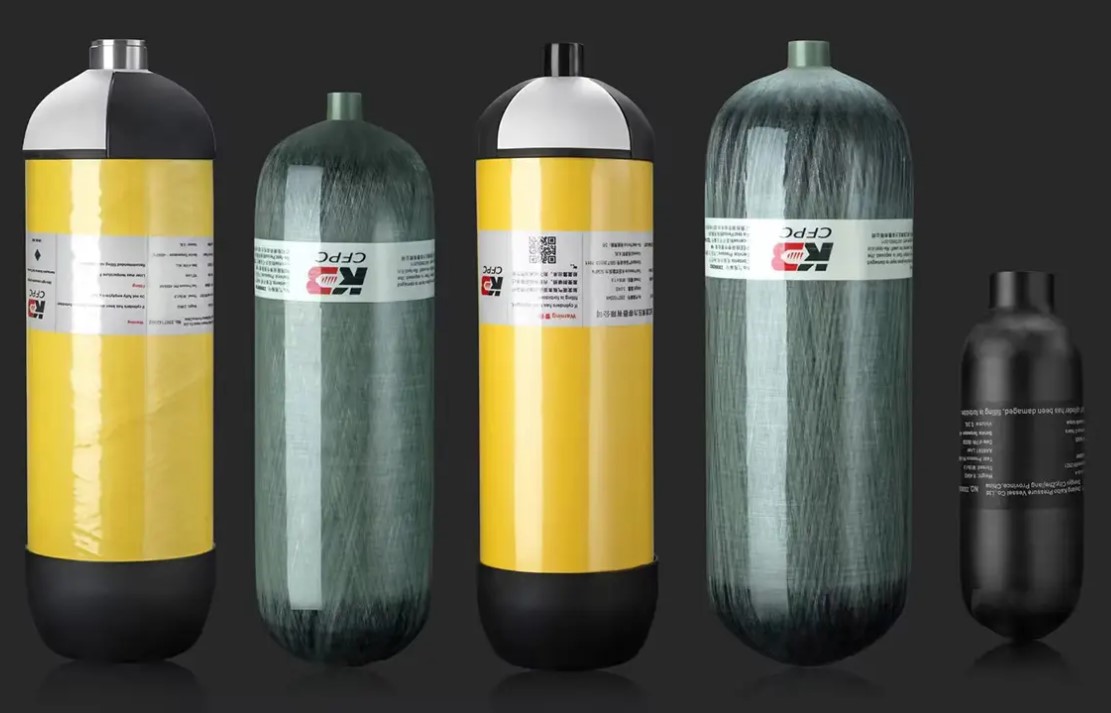Firefighters rely on Self-Contained Breathing Apparatus (SCBA) to protect themselves from harmful gases, smoke, and oxygen-deficient environments during firefighting operations. The SCBA is a critical piece of personal protective equipment, allowing firefighters to breathe safely while they tackle hazardous situations. Modern SCBAs used by firefighters are highly advanced, integrating a variety of components to ensure safety, comfort, and durability. One of the most crucial elements of modern SCBA systems is the use of carbon fiber composite cylinders, which offer significant advantages in terms of weight, durability, and ease of use.
This article delves into the types of SCBAs firefighters use, focusing particularly on the role of carbon fiber composite cylinders and why they are becoming the standard choice in firefighting gear.
SCBA Components and Types
An SCBA system used by firefighters consists of several key components:
- Air Cylinder: The air cylinder is the part of the SCBA that stores breathable air under high pressure, allowing firefighters to breathe in hazardous environments.
- Pressure Regulator and Hoses: These components reduce the high-pressure air stored in the cylinder to a breathable level, which is then delivered to the firefighter through the mask.
- Face Mask (Facepiece): The face mask is a sealed covering that protects the firefighter’s face while supplying air. It is designed to provide a tight seal to prevent smoke and hazardous gases from entering the mask.
- Harness and Backplate: The harness system secures the SCBA to the firefighter’s body, distributing the weight of the cylinder and allowing the user to move freely.
- Alarm and Monitoring Systems: Modern SCBAs often include integrated alarm systems that alert the firefighter if their air supply is low or if the system experiences any malfunction.
Types of Air Cylinders in Firefighting SCBA
The air cylinder is arguably the most important component of the SCBA, as it directly supplies breathable air. Cylinders are categorized primarily by the materials they are made from, with steel, aluminum, and carbon fiber composite cylinders being the most common. In firefighting applications, carbon fiber composite cylinders are often preferred due to their numerous advantages.
Steel Cylinders
Steel cylinders are the traditional choice for SCBAs and are known for their durability and ability to withstand high pressures. However, steel cylinders are heavy, which makes them less ideal for firefighting. The weight of a steel cylinder can make it difficult for firefighters to move quickly and efficiently, especially in high-stress environments like burning buildings.
Aluminum Cylinders
Aluminum cylinders are lighter than steel but still heavier than carbon fiber composite cylinders. They offer a good balance between cost and weight but may not provide the same level of comfort or ease of mobility as carbon fiber cylinders in extended firefighting operations.
Carbon Fiber Composite Cylinders
Carbon fiber composite cylinders have emerged as the preferred choice for modern SCBA systems used by firefighters. These cylinders are made by wrapping an inner liner (typically made from aluminum or plastic) with layers of carbon fiber, which is a lightweight and extremely strong material. The result is a cylinder that can hold air at very high pressures while being significantly lighter than steel or aluminum alternatives.
Advantages of Carbon Fiber Composite Cylinders:
- Lightweight: Carbon fiber composite cylinders are much lighter than both steel and aluminum cylinders. This reduction in weight can make a significant difference during long firefighting operations, where the ability to move quickly and efficiently is critical.
- Durability: Despite being lightweight, carbon fiber composite cylinders are incredibly strong and durable. They can withstand high pressures and are resistant to damage from impacts, making them well-suited for the harsh conditions firefighters often face.
- Corrosion Resistance: Unlike steel, carbon fiber cylinders do not rust, which enhances their longevity and reduces the need for frequent maintenance.
- Longer Service Life: Depending on the type of cylinder, carbon fiber composite cylinders have a service life of up to 15 years (Type 3), while some newer Type 4 cylinders with PET liners may even have no service life limit under certain conditions. This makes them a cost-effective investment in the long term.
- Higher Air Capacity: Due to their ability to hold air at higher pressures, carbon fiber composite cylinders allow firefighters to carry more air in a lighter package. This means they can stay in hazardous environments for longer periods without needing to change cylinders.
How Carbon Fiber Cylinders Benefit Firefighters
Firefighters need to move quickly and work in intense conditions, and the equipment they carry must not slow them down. Carbon fiber composite cylinders are the solution to this challenge, offering significant advantages that directly improve the effectiveness of firefighters on the job.
Enhanced Mobility
The lighter weight of carbon fiber cylinders means that firefighters are less burdened by their gear. Traditional steel cylinders can weigh over 25 pounds, which adds strain to firefighters already wearing heavy protective clothing and carrying additional tools. Carbon fiber cylinders, in contrast, can weigh less than half that amount. This reduction in weight helps firefighters maintain agility and speed, which are essential when navigating through smoke-filled buildings or climbing stairs during an emergency.
Increased Air Supply for Longer Operations
Another benefit of carbon fiber composite cylinders is their ability to store air at higher pressures—typically 4,500 psi (pounds per square inch) or more, compared to lower pressures in steel or aluminum cylinders. This higher capacity allows firefighters to carry more breathable air without increasing the size or weight of the cylinder, enabling them to stay on task for longer durations without needing to retreat for a cylinder change.
Durability in Harsh Environments
Firefighting is physically demanding and takes place in dangerous environments where equipment is exposed to high temperatures, sharp debris, and rough handling. Carbon fiber composite cylinders are designed to withstand these challenges. The carbon fiber wrap provides additional protection against impacts and other external forces, reducing the likelihood of damage and improving the overall reliability of the SCBA system.
Maintenance and Service Life
Carbon fiber cylinders, particularly Type 3 cylinders with aluminum liners, typically have a service life of 15 years. During this time, they must undergo regular inspections and testing to ensure their safety and performance. Type 4 cylinders, which use a plastic (PET) liner, may have an unlimited lifespan depending on usage and care. This extended service life is another advantage that makes carbon fiber cylinders a practical choice for firefighting departments.
Conclusion
Firefighters face life-threatening hazards during their work, and they depend on their equipment to keep them safe. SCBA systems are an essential part of their protective gear, and the air cylinder plays a critical role in ensuring a steady supply of breathable air in dangerous environments. Carbon fiber composite cylinders have become the top choice for SCBA systems in firefighting due to their lightweight, durable, and high-capacity design. These cylinders offer significant advantages over traditional steel and aluminum options, enhancing the mobility, comfort, and operational efficiency of firefighters. As SCBA technology continues to evolve, carbon fiber cylinders will remain a key component in improving firefighter safety and performance.
Post time: Aug-23-2024



